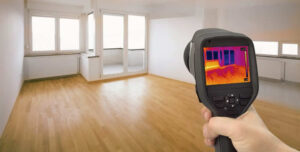Just how to Check If Your House Has a Surprise Leak
Just how to Check If Your House Has a Surprise Leak
Blog Article
Presented here in the next paragraph you'll find a lot of great insights on the subject of Finding hidden leaks.

Early detection of leaking water lines can minimize a possible disaster. Some little water leaks may not be visible.
1. Analyze the Water Meter
Every residence has a water meter. Examining it is a surefire manner in which helps you discover leaks. For starters, turn off all the water sources. Ensure no person will purge, make use of the tap, shower, run the washing maker or dish washer. From there, most likely to the meter and also watch if it will change. Considering that no person is utilizing it, there need to be no activities. If it relocates, that indicates a fast-moving leakage. Likewise, if you spot no changes, wait an hour or 2 and also examine back once more. This suggests you might have a sluggish leakage that could also be below ground.
2. Inspect Water Intake
If you detect abrupt adjustments, regardless of your intake being the exact same, it implies that you have leakages in your plumbing system. An unexpected spike in your costs suggests a fast-moving leakage.
A steady boost every month, even with the very same behaviors, reveals you have a slow leak that's additionally slowly intensifying. Call a plumber to completely check your residential or commercial property, specifically if you really feel a warm area on your flooring with piping underneath.
3. Do a Food Coloring Test
When it comes to water usage, 30% comes from toilets. If the shade somehow infiltrates your dish during that time without flushing, there's a leak between the tank and also bowl.
4. Asses Outside Lines
Do not neglect to check your outside water lines too. Must water leak out of the link, you have a loose rubber gasket. One small leakage can throw away heaps of water and spike your water bill.
5. Evaluate the circumstance as well as evaluate
Property owners ought to make it a practice to examine under the sink counters and even inside cabinets for any type of bad odor or mold growth. These two warnings suggest a leakage so punctual focus is required. Doing regular inspections, also bi-annually, can conserve you from a significant problem.
Examine for stainings as well as deteriorating as many pipes and devices have a life expectations. If you suspect leaking water lines in your plumbing system, do not wait for it to rise.
Early detection of dripping water lines can mitigate a possible catastrophe. Some tiny water leaks may not be noticeable. Inspecting it is a guaranteed means that assists you uncover leaks. One little leak can waste heaps of water and surge your water costs.
If you suspect dripping water lines in your plumbing system, don't wait for it to escalate.
WARNING SIGNS OF WATER LEAKAGE BEHIND THE WALL
PERSISTENT MUSTY ODORS
As water slowly drips from a leaky pipe inside the wall, flooring and sheetrock stay damp and develop an odor similar to wet cardboard. It generates a musty smell that can help you find hidden leaks.
MOLD IN UNUSUAL AREAS
Mold usually grows in wet areas like kitchens, baths and laundry rooms. If you spot the stuff on walls or baseboards in other rooms of the house, it’s a good indicator of undetected water leaks.
STAINS THAT GROW
When mold thrives around a leaky pipe, it sometimes takes hold on the inside surface of the affected wall. A growing stain on otherwise clean sheetrock is often your sign of a hidden plumbing problem.
PEELING OR BUBBLING WALLPAPER / PAINT
This clue is easy to miss in rooms that don’t get much use. When you see wallpaper separating along seams or paint bubbling or flaking off the wall, blame sheetrock that stays wet because of an undetected leak.
BUCKLED CEILINGS AND STAINED FLOORS
If ceilings or floors in bathrooms, kitchens or laundry areas develop structural problems, don’t rule out constant damp inside the walls. Wet sheetrock can affect adjacent framing, flooring and ceilings.
https://www.servicemasterbyzaba.com/blog/how-to-detect-water-leakage-in-walls/

I was introduced to that write-up about Finding hidden leaks through a good friend on another web address. Sharing is nice. Helping others is fun. Thanks so much for your time invested reading it.
Report this page